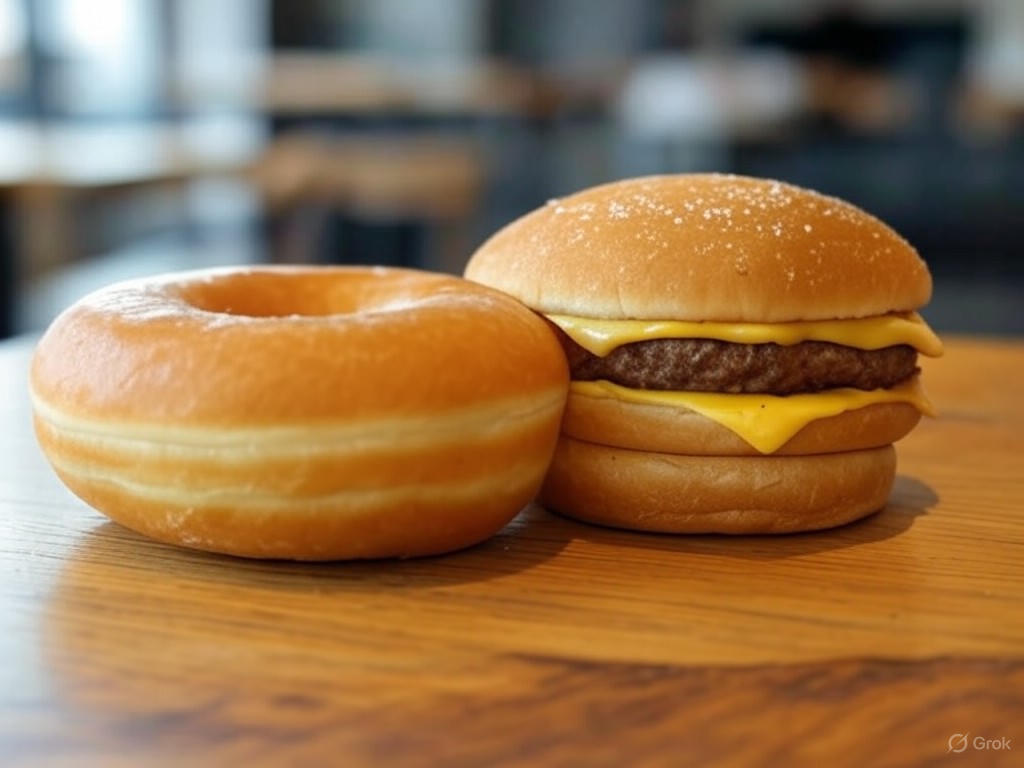Sweet Deal Gone Sour: Krispy Kreme and McDonald’s Part Ways
In a surprising turn of events, two giants of the food industry, Krispy Kreme and McDonald’s, have decided to dissolve their much-hyped partnership. Launched with fanfare in March 2024, the collaboration aimed to bring Krispy Kreme’s iconic doughnuts to McDonald’s menus across the nation, promising a sweet twist to the fast-food experience. However, just over a year later, the alliance has been scrapped, with both companies acknowledging that the venture failed to generate the expected profits.
The partnership initially sparked excitement among consumers eager to pair their morning coffee or burger meal with a glazed treat. McDonald’s, known for its expansive breakfast menu, saw the addition of Krispy Kreme doughnuts as a way to attract new customers and boost sales during key hours. Krispy Kreme, on the other hand, hoped to expand its reach by tapping into McDonald’s vast network of locations. Yet, despite the initial buzz, the numbers told a different story. Reports indicate that demand for the doughnuts at McDonald’s outlets steadily declined over the months, leaving both companies with unsold inventory and underwhelming revenue figures. Analysts suggest that the pairing may have struggled due to pricing challenges, mismatched customer preferences, or simply an oversaturated market for sweet breakfast options.
Industry experts weigh in on the reasons behind this failed experiment. Some point to the logistical hurdles of integrating a specialized product like doughnuts into a fast-food chain’s streamlined operations. Freshness, a hallmark of Krispy Kreme’s appeal, may have been compromised in the high-volume, fast-paced environment of McDonald’s. Others argue that the target demographics of the two brands didn’t align as seamlessly as anticipated. McDonald’s customers, often seeking quick and affordable meals, might not have been willing to splurge on a premium dessert item. Meanwhile, loyal Krispy Kreme fans may have preferred to stick to standalone stores for the full experience of freshly made treats. This disconnect likely contributed to the partnership’s inability to sustain momentum after the initial hype faded.
As both companies move forward, the end of this alliance raises questions about the future of cross-brand collaborations in the food sector. For McDonald’s, this setback may prompt a reevaluation of its strategy to diversify its menu through partnerships. The fast-food titan could shift focus to in-house innovations or explore alliances with other snack categories that better complement its core offerings. Krispy Kreme, meanwhile, might double down on its standalone stores and online delivery channels to reconnect with its dedicated fan base. Both brands remain optimistic, with statements indicating a mutual respect and a commitment to learning from this experience.
While the Krispy Kreme-McDonald’s partnership didn’t deliver the sweet success they envisioned, it serves as a reminder of the complexities involved in blending distinct brand identities. In the ever-competitive food industry, even the most promising ideas can crumble if consumer demand and operational realities don’t align. For now, fans of both brands will have to satisfy their cravings separately, as this sweet deal has officially gone sour.


